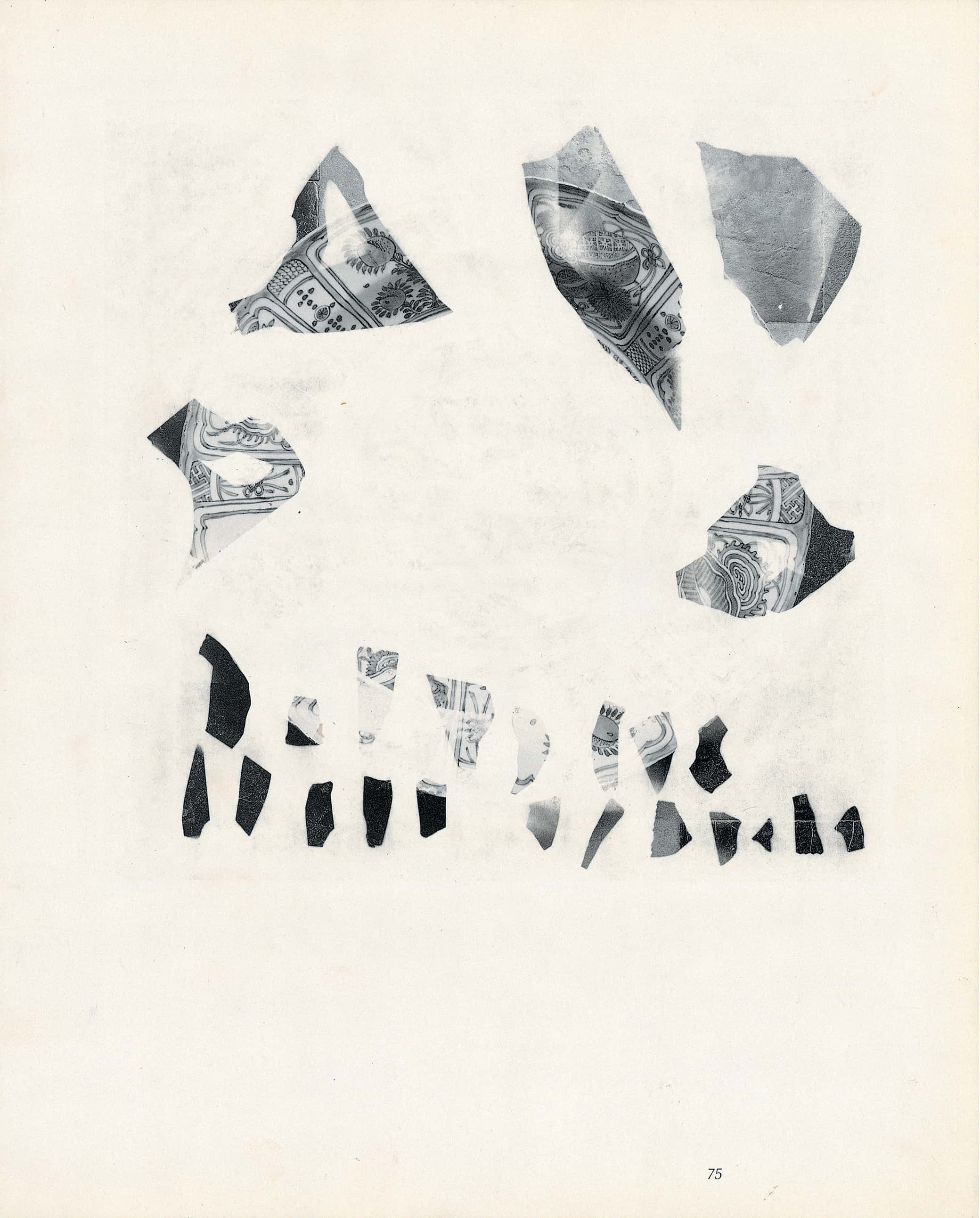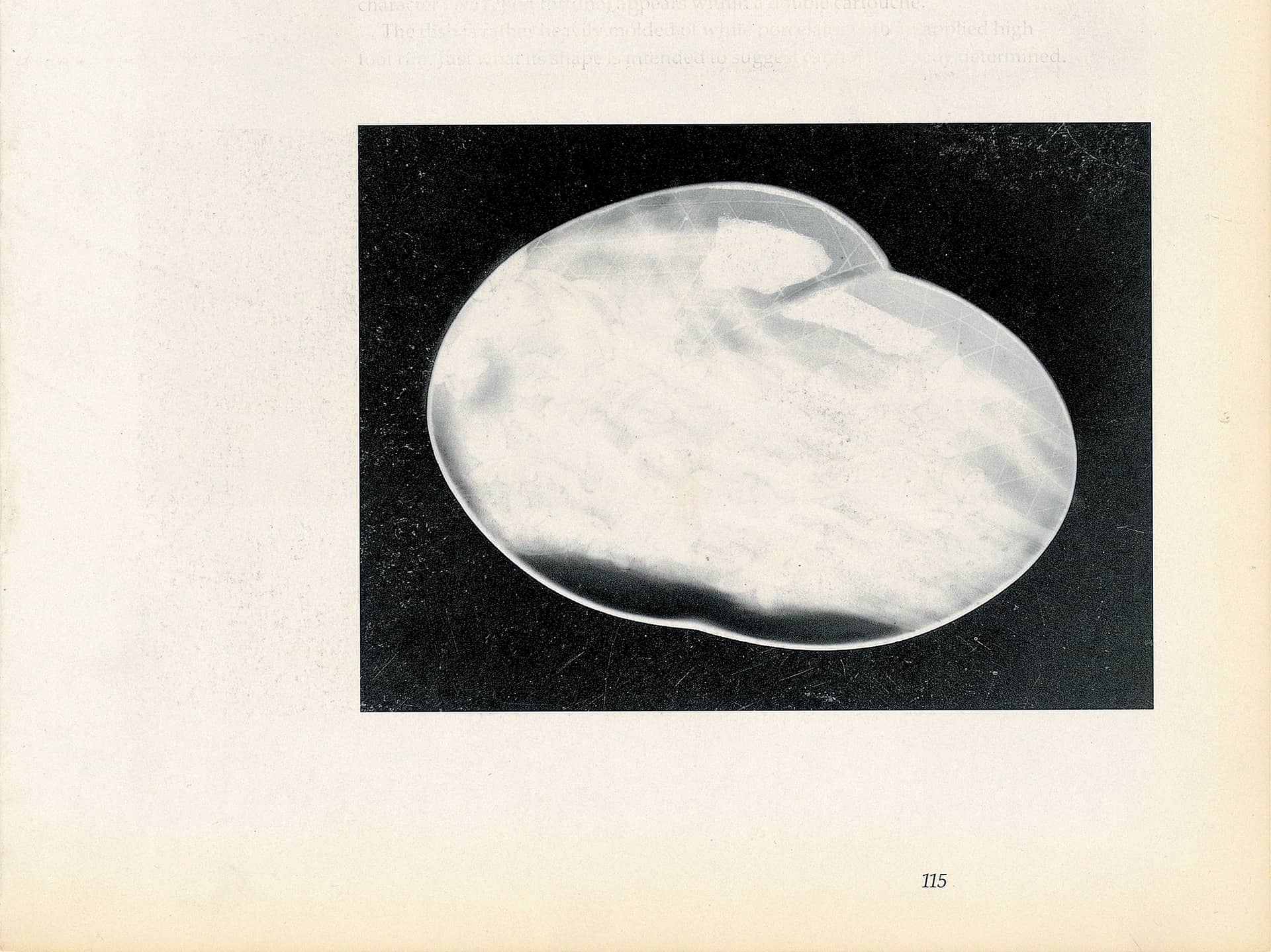-
From Socialism to Capitalism
“The greatest number of poor is not to be found in barren countries or amidst barbarous nations, but in those which are the most fertile and the most civilized.”
John McFarlane
In 2002 the Israeli National Insurance Institute responsible for welfare payments revealed a survey that shocked the nation: An average of one in three children were living in poverty, with one in five families subsisting well below the poverty line. Out of a population numbering 6.5 million, 1.32 million (618,000 of which were children) were suffering from neglect.1 Simultaneously, Israeli Business News recently reported that “18 families own 32% or NIS 198 billion of the total income of the top 500 companies in Israel. Their aggregate revenue is the equivalent of 77% of the state budget (NIS 256 billion) and approximately 50% of the business GDP.” In June of 2006 Warren Buffet and Donald Trump made announcements that they were acquiring and investing mammoth sums in Israel, a seemingly encouraging announcement in the context of a region plagued by instability and war. With confidence in the future abnormally low, the investment of world-renowned businessman willing to bet their fortunes on Israel’s future could not but be read positively. Israel had finally arrived at a crescendo of economic success, yet few appeared concerned at the social price that these developments had begun to exact.
The glaring social inequality that colors contemporary Israeli society is particularly startling in light of the fact that in the 1960’s Israel boasted one of the most egalitarian distributions of wealth in the Western world. Beginning in the mid 1970’s with the rise of the Likud, a right wing political party, the Israeli government has gradually extrapolated itself from the economy through the privatization of various industries that had long been managed by government. In the mid 1980’s a series of national financial scandals including the crash of the Tel-Aviv stock market and rampant inflation resulted in the passing of the Economic Stabilization Plan (privatizing SOE’s) that solidified private capital as a power independent of the state. In 2003, in response to a grave economic recession and a growing deficit, the former Finance Minister Benjamin Netanyahu introduced a transformative economic plan: Co-opting people back into the labor market by cutting welfare benefits, privatizing state-owned corporations, reducing the top income tax rate, slashing the public sector, and crippling the power of organized labor. These dramatic cutbacks appeared as a final nail in the coffin, Netanyahu blamed the recession on organized labor, proposing draconian neo-liberal measures that would re-inforce the structural re-arrangements that began in 1985.
“Netanyahu feels he has the legitimacy to treat the unions as the nations worst enemy. He has launched war on the strongest unions – the electricity workers as well as teachers – 4,500 of whom were fired this month – having pretty much cracked down on everyone else. Single mothers, the elderly and the disabled have all suffered cruel cuts in their meager benefits. The conditions for eligibility for unemployment pay have been hardened, and a fierce campaign by the treasury labeled those not in work as “lazy sluggers” living at the taxpayers expense. A program for dealing with the unemployed, recently introduced, consists of forcing them to travel great distances to work for petty cash. The hatred with which Netanyahu speaks of the poor and unemployed matches his loathing for the crippled unions. The Finance Ministzer may be landing the fatal blow on the unions, but he is merely finishing off a process begun by Shimon Peres as labor prime-minister” (Baram, 34).
Over a thirty-year period an enormously powerful class of local and international capitalists have gradually taken control of Israeli society. While privatization on the surface appears to grow net wealth, in reality it has increased the coffers of the wealthy at the cost of creating huge clefts between the lower and upper classes. Today the gap between the lowest and highest earners in Israel is the second highest in the industrialized world, and the child poverty rate is second only to Mexico amongst developed countries (Hanieh, 32). How did Israel degenerate from a bastion of socialism to a form of pure market capitalism second only to the United States in such a short period of time? Furthermore, what are the implications of privatization? Whom do these policies benefit, and how do they affect local abilities to self-determine? To what extent have economic transformations triggered broader socio-cultural transformations in Israeli society? Exposing social institutions to the principles of the market may ingratiate Israel to the International Monetary Fund, synchronizing the Jewish State with other Western powers, and increasing the wealth of local elites, but at what expense are these gains achieved?
This paper is an academic inquiry into the causes and effects of Privatization in Israel. It seeks to address how one of the world’s most egalitarian societies so rapidly descended into a quagmire of poverty and social strife, where the dictates of the few have come to usurp the interests of the many. Defenders of Privatization 2 (the transfer of ownership, property, or responsibility from the public to the private sector) argue that these processes improve the delivery of goods and services by destroying government monopoly, and introducing laws of competition into the market. They also maintain that the State’s evacuation from private realms will be accompanied by a decrease in the permeation of State ideology. This is seemingly positive, especially when one considers the enormous amount of power that the Israeli state has wielded since its inception.
“The Israeli government at one point owned almost all of the country’s land, along with water, energy, telecommunications and natural resources. It also holds stakes in major banking institutions, a handful of which control financial markets and distort the allocation of credit. Private industry is also besieged by monopolies, raising consumer prices by an average of 30%.” (Strassel, The Wall Street Journal)
The ‘efficiency’ argument hinges on an understanding of a society’s ‘economic health’ as being directly related to wealth and national GDP. This reading obfuscates considerations of human experience, networks of solidarity, and the environment. While recent statistics indicate that Netanyahu’s plan has provoked a surge in overall economic growth, only the top 20% of Israel’s population has actually benefited from this growth, with the other 80% experiencing a decrease in wealth (Adva Center Report, 2007). According to Uri Ram:
“A team of Israel’s most senior welfare analysts had recently calculated the “net benefit” of the combined overall changes in the state policies of welfare and taxation between 2001 and 2006, as it pertains to the decimal brackets of income. In other words, it calculated how much an average family from each income bracket gains or loses as a result of, first, changes in the structure and amount of welfare allowances that the government dispenses to the population, and second, changes in the structure and amount of taxes that government levies on the population. The results are striking: a family in the upper income bracket (the 10% richest families) has gained in 2006 compared to 2001 a monthly sum of 1,246 NIS, while a family in the lower income bracket (the 10% poorest families) has lost a monthly sum of 643 NIS3 .”
Privatization has in fact resulted in the transferral of wealth and earning power from the more numerous lower classes towards the wealthy minority. Furthermore, different ways of reading statistics can support a variety of seemingly incompatible claims. “Reading overall growth is inadequate insofar as a rise or fall in one category can obscure huge gains or losses for specific groups in society” (Hanieh, 8). I argue that if conceptions of social justice, consideration of the environment, and other ‘unquantifiable’ factors,’ continue to be ignored – due to their lack of ‘market value’ or for any other purpose – the state’s well-being will be more threatened than by any supposed enemy. As stated by Robert E. Goodin: “Economists often equate prosperity with expanding nation production (GNP), and hence with augmented corporate profits, despite the weaknesses of GNP as an index of prosperity and the often-discussed fate that private profits often impose massive and unaccounted environmental degradation, injustice, and human misery 4 .” These values are far more integral to the long-term security of the Jewish State than any statistical survey. Failure to live up to them risks alienating the very individuals on whom the state is so dependant and compromising the very principles5 for which the state was supposedly created. Socialism’s ‘ethos of solidarity’ must be seen as an overarching value that determines, envelops, and conditions the quality and nature of human interaction.
The literature devoted to explaining Israel’s emergence as a leading capitalist state largely attributes the change in governmental policy to an ideological shift amongst Israel’s ruling elite. The move to isolate ideology, as pointed out by Jonathan Nitzan, underscores the nature of Israeli class relations, obscuring several key historical facts about Israel’s birth. The transformation of Socialist institutions currently being overrun through processes of privatization and globalization into Capitalist structures is seemingly at odds with Zionism’s Socialist heritage. I argue that Zionism has not lost sight of its initial vision. Its vision was simply not what it was thought to be. Socialism was not adopted for purely ideological reasons, but rather because it was the most effective way of gaining control of Palestine. Labor-Zionism appealed to masses of Eastern European Jewry who at the turn of the 20th century were fighting for economic survival. Socialism fomented a cohesive Israeli identity amongst immigrants of disparate backgrounds. It also provided government with the economic control necessary to foster the accumulation of private capital – a necessary prerequisite for any healthy economy. Underneath its Socialist veneer, the state’s day-to-day economic interactions had definitively capitalist undertones. In the years prior to the State’s creation, the absence of an indigenously Jewish upper class led the proto-state apparatus (The Jewish Agency, The Labor Union, World Zionist Organization) to assume the role of providing and monitoring provisional capital channeled from International Jewry towards favored industrialists in Palestine. Following the declaration of independence, the State nurtured this burgeoning capitalist class through the cultivation of projects that were jointly undertaken by the government and a handful of wealthy families.6 Eventually these families grew out of their state sponsored cocoon, and emerged as powerful forces in their own right. While it would be easy to long for the good old days of the kibbutz, the labor union, and social equality, the reality is that it was from this ‘cocoon of socialism’ that these uber-rich fiefdoms derived their initial power. Herein lies the trickiest contradiction: Processes of capital accumulation were facilitated by a system that claimed and appeared to be pursuing opposite objectives.
Both Capitalism and Socialism make absolute claims to serve the greater good of society, to ensure that each citizen has access to the ‘good life.’ Capitalism’s oft-repeated argument, as stated by theorists such as Robert Nozick, is that through the protection of each man’s ownership over his talents, the natural state of human desire and organization is preserved.7 ] Socialism argues that through interventions in the economic flow of capital, equal life-chances are created throughout a community. Israel’s fluctuation between instances of extreme Socialism and Capitalism exposes the existence of super-structural power entities that transcend these seemingly oppositional politico-economic systems. This points to the presence of a larger meta-system that transcends both Capitalism and Socialism: The will to accumulate differentially (to generate profits that outpace the average) appears to be universally ingrained throughout a spectrum of politico-economic systems. This largely explains how China has remained communist whilst simultaneously emerging as a leading capital accumulator. The manner in which dominant capital emerged in Israel changes the way in which the ‘Capitalist/Socialist’ dialectic needs to be thought through. The compunction to focus on ideology overlooks the issue of power, a central component of Foucault’s critique of Marxist theory. Debating the dis/advantages of capitalism and socialism obscures the existence of the trans-political sector of capitalist accumulators who continually work at restructuring society in a way that facilitates their continued earning power. Through a complex web of monopolies and nepotism, a largely Ashkenazi (Jews of Eastern European origin) ruling class has been carved out, signaling the failure of Zionism’s initial utopian economic vision – as delineated by Theodore Herzl’s novella Altneuland – wherein social justice would reign through the development of collectivist institutions in Palestine. Even more shocking is that the eighteen families that currently rule the Israeli economy amassed their wealth through socialism’s complex distillation of government awarded mandates, contracts, and monopolies.
Through the introduction of a neo-liberal economic program and accompanying processes of privatization, Israel has been transformed from a settler-colonial society into a globalized economic player of international importance. The growth of dominant capital groups in Israel have both contributed to and benefited from the subsequent growth of social cleavage, consumption, and uneven development. Israel’s new class of bourgeois industrialists now control an alarming percentage of national space and wealth. Dominant Capitalist groups in Israel have pursued the accumulation of capital to an extent wherein they now resemble statist structures, with an inordinate amount of control over the political system, the environment, media, and a variety of other public institutions. To approach capital as a purely quantifiable material is to overlook the power inherent in wealth. To be wealthy implies a buying power that hinges on the capitalist’s ability to reorganize structures that will enhance future earning capacities. Capital is defined by Jonathan Nitzan in his book Israel’s Global Political Economy as a ‘power over cooperation’ capable of organizing social relations, and not merely as ‘an aggregate of commodities.’ According to his analysis, the capitalist class strives not merely to accumulate wealth, but to ensure that their rate of profit accelerates faster than the national average. Meaning that the capitalist is constantly seeking to restructure social relations and institutional frameworks in order to ensure the maintenance and extension of prior powers. Nitzan’s point articulates what is quite apparent: Through the transmutation of these fifteen families into multinational corporations, they are dangerously close to disempowering local and individual abilities to self-determine. Israel’s globalized economy has transformed the state’s initial identity from an authoritarian socialist construct into a laissez-faire system that has largely abandoned social responsibility to the dictates of the free market. Since the initiation of privatization, the assets of the wealthy have increased manifold, creating a ruling class with complex ties to ruling authorities who have almost complete control over Israel’s pace and mode of development. The result is a series of dangerous schisms that are beginning to threaten Israeli networks of solidarity, as well as the popular ethos of social justice on which the state has long derived its legitimacy.
-
Foundations of the Jewish Economy: Herzl’s 'Altneuland' and 'The Jewish State'
According to Mark Heller, a correspondent for The Jerusalem Post, the concentration of wealth in Israel is the second highest in the Western World. The notorious family fiefdoms include: Arison, Borovich, Danker, Ofer, Bino, Hamburger, Wiessman, Wertheim, Zisapel, Leviev, Federman, Saban, Fishman, Shachar, Kass, Strauss, Shmeltzer, and Tshuva. These families collectively control a fifth of the revenue generated from Israel’s leading companies, worth approximately NIS 118 billion, according to Business Data Israel’s (BDI) ranking of the 500 top companies in Israel. These top 500 companies account for 40% of the business sector, and 59% of National revenue. In an article published in The Jerusalem Post in March 2008 Sharon Wrobel writes that “19 families controlled 39 percent of the income of the 500 leading companies in 2007, up from 33% in 2006.
It seems odd that contemporary Israeli affairs are comprised of such an unusual political construct, where bloodlines and clannish structures dominate the economy of a seemingly Western and Democratic nation. Or is it? Hannah Arendt has written extensively on the political nature of the family unit in Jewish history. In the first chapter in The Origins of Totalitarianism titled Anti-Semitism, as well as in her essay Zionism and the Jewish State, Arendt makes repeated reference to the clannish structure that defined the economic and political nature of pre-emancipation Jewry. Arendt’s analysis maintains that the inter-related structure of Jewish familial and business relations was indirectly responsible for the rise of Zionism and its obsession with normalizing the Jew’s schizophrenic social position. When emancipation freed the sons of Jewish bankers to enter the Universities and the professions of the arts they did so enthusiastically. In Eastern Europe at the dawn of the 20th century, these fertile minds found themselves excluded both from the traditional structure of Jewish communal relations, and from the university and other secular fields of the arts. They were neither in need of charity, nor able to profit from the network of familial relations which had come to dominate the structure of economic interactions.
“The second factor responsible for the rise of Zionism was entirely Jewish – it was the emergence of a class entirely new to Jewish society, the intellectuals, of whom Herzl became the main spokesman and whom he himself termed the class of “average intellects” (durchschnittliche). These intellectuals resembled their brethren in the more traditional Jewish occupations in so far as they too were entirely de-Judaized in respect to culture and religion. What distinguished them was that they no longer lived in a cultural vaccum; they had actually become ‘assimilated’: they were not only de-Judaized, they were also Westernized. This however did not make for their social adjustment. Although Gentile society did not receive them on equal terms, they had no place in Jewish society either, as they did not fit into its atmosphere of business and family connections (Arendt, 1978, 169).
Arendt asserts that this was precisely the reason why a disenfranchised intellectual like Herzl sought normalization, and a place in the world, through Zionism’s calling for a Jewish national home in Palestine. Beginning in the late 19th century, tremors of change began to sweep through Jewish Eastern European society. With the late arrival of emancipation, the ghetto door opened, and the stench of a long-insulated community begin to intermingle with the fresh air of broader society. The reluctance of society to accept Jewry after almost a millennia of segregation put up a social barrier as soon as the threshold towards emancipation had been crossed. Caught between a Jewish world whose social relations they no longer fit into, and a broader society that would not accept them, young Jews educated in the arts (and outside the communities tradition of business relations) began to dream of a new society where their identity could be normalized once and for all. Artistic works like Max Nordau’s Muskeljedentum and Theodore Herzl’s Altneuland presented aesthetic visions of a Jewish renaissance that reflected the hybridity of a Jewish European culture caught between Jewish tradition and the newly incorporated ideals of the enlightenment.
Israel is unique from other nations in that it was imagined before it was constructed. The seemingly contradictory relationship between Israel’s Socialist past and the status quo can be illuminated through a comparative study of the fictions and the political realities they eventually gave rise to. In order to flesh out the trajectory of Israel’s politico-economical development it is important to situate the points of origin from which Israel’s political system evolved. Literary, artistic, and theoretical representations of a Jewish future in Palestine provided a theoretical blueprint upon which the eventual forms of Israel’s early institutions were based. In 1899 Theodore Herzl published The Jewish State, a political manifesto that described the creation of a Jewish Holding Company that would collect Jewish European capital in order to purchase Palestinian Land and invest it in the necessary infrastructure required to support a population. “Reading Herzl’s The Jewish State today is a peculiar experience. One becomes aware that those things in it that Herzl’s own contemporaries would have called utopian, now actually determine the ideology and policies of the Zionist movement” (The Jewish State, 7). Institutions like the Jewish Agency and the Histadrut are vaguely represented in both The Jewish State and Altneuland, a novel Herzl published in 1902 when he had grown pessimistic about the viability of actualizing his ideas. In Altneuland Palestine was conceptualized as a barren land transformed through Jewish settlement into a futuristic metropolis, foreshadowing the eventual production of mythological imagining. The novel recounts the journey of two men, Kingscourt and Freidrich, a Jew and a gentile who flee Viennese society for the tranquility of an unknown island. The two voyagers depart Europe and stop in Haifa where they find a desolate and backwards land. On their way back to Europe after twenty years, they again stop in Palestine, only to discover that it has been resettled by Jews and transformed into a modernist metropolis teeming with life. In Altneuland Herzl illustrated his vision in its purest forms, unfettered by the realistic considerations necessitated whenever action is to be imposed onto the political world. Herzl’s work depicted a futuristic utopia created de novo, with no links to the past. Palestine was thus constructed through literature and popular imagery into a blank slate on which human will and ingenuity could write what it wished
Both The Jewish State and Altneuland provide graphic representations of a socialist and collectivist society that Zionism would create in Palestine. According to Herzl’s vision, economic and political systems should respond to peoples needs. Institutions are charged with the provision of necessary services, not with the obligation to generate profit. In Altneuland Herzl rhetorically expressed disapproval of the Jewish inter-communal system of economic relations, wherein the wealthy acted as guardians of the poor. As Arendt recounted in her essay Herzl and Lazare: “Herzl described, in an interview with Lord Rothschild, that Jewish charity was a mechanism for keeping the needy in subjection” (Arendt, 1978, 127). It seems that Herzl’s personal resentments against superfluous wealth similarly colored his vision of a new society imbued with a social vision that was inherently anti-capitalist: “We did not indeed abolish money, my dear, but it is not everything here. The old disgusting kow-towing to money has naturally disappeared” (Herzl, 1902, 104).
Revisiting Herzl’s writing reveals a crucial tension in his own work that can help us understand Israel’s current predicament. His desire to to create a State, and fix the Jewish nation qua all the other nations reveals the dominant aim of Political Zionism to be the normalization of the Jewish condition. Socialism was merely the conduit through which this could be achieved. Socialism was a convenient tool both capable of settling the land and reversing the position of the newly arrived immigrants as ‘perpetual outsiders’. Zionism’s collectivist ideas were not left to languish in whimsical delusion because they were the most effective means of founding a state. They were practically applied through a variety of social experiments, including the kibbutz, moshav, histadrut (National Labor Union), kupat holim (sick fund), and a variety of other collectivist structures that are currently being overrun by processes of privatization and globalization.


Nor did it turn its gaze upward to create in Heaven an 
Nor did it turn its gaze upward to create in Heaven an eternal habitation for the souls of men. -
The Early Years
Jewish Immigration began in the late 1880’s with the establishment of collective communities throughout Palestine. At this time Palestine was perceived as a poor Asiatic country, and the upper middle classes of Jewish European society were largely disinterested in immigration. At this time there was a division between Eastern and Western Jewry. Western Jewry had been emancipated much earlier and was more educated in secular thought than their Easter brethren. French, German and Austrian Jews thought of Zionism as a method of rescuing persecuted Eastern Jews from Russia and Poland without eroding their own reputations and risking their privileged social positions. Members of the Second and Third waves of immigration in the 1920’s were comprised of young Socialist radicals from Russia and Eastern Europe. Once in Palestine these poor immigrants had to compete with the widespread availability of cheaper Arab Labor. Jewish farms employed Arab workers because economic necessity dictated it, and the Jewish labor force was left to struggle for survival. If not for the aid of Jewish charities they would have floundered. At the same time, there was an enormous amount of American Jewish money interested in creating a Jewish National home. The Zionist organization could only get hold of the land through Laborers; the only way the Laborers could stay on the land was if they had some kind of livelihood. An implicit bargain evolved into a very successful formula responsible for the creation of the Jewish Yishuv (homeland). Private money was channeled into Socialist Collectivist Communities. Philanthropists created an economy separate from the Arab one; Jewish immigrants created their own sources of employment on behalf of the National movement, of which they were the owners. This is how the Zionist movement gained a Labor force capable of settling, preserving, and sustaining the land: The immigrants used philanthropy to create their own collectivist economy through agriculture. This reciprocal relationship involved into a very successful combination of attaining National ends by Socialist means.
European Zionist groups forged relationships with many Jewish movements that weren’t interested in defining themselves as ideologically Zionist, but that were invested in assisting Jews under duress. The pre-state apparatus was primarily composed of two umbrella organizations: The World Zionist Organization (WIZO) founded in 1897 at the First Zionist Congress, and The Jewish Agency, founded in 1923. Members of the Jewish Agency were elected by members of WIZO who were situated all over the Jewish Diaspora. Both organizations oversaw a variety of other institutions, including the Jewish Colonial Trust, Keren Hayesod, the Palestine Electric Company, the Jewish National Fund – in short a variety of institutions responsible for fundraising or developing infrastructure in Palestine itself. The Jewish Agency and WIZO created the National Convention, a representative body democratically elected by all members of the Yishuv. It had an executive committee who ran the day-to-day affairs. Formally this government received its authority from the British Mandatory Authority, and it reported to them. In a different channel, it also reported to the Jewish Agency. During the 1920’s and 1930’s power shifted from the external bodies representing World Jewry, into the hands of the Executive Committee and local agencies in Palestine.
The federation of Jewish Hebrew Laborers, known as the Histadrut, was created in 1920. The Histadrut constituted an entire web of social relations successfully created by the working class. It’s members created businesses through the founding of factories and farms, a health fund, a youth movement, a publication house, newspapers, as well as security organizations. The Histadrut was foreshadowed by Herzl’s conception of a Jewish Company that would nurture the members of the New Society: “In philanthropy we too have created nothing new. We have merely systematized the old facilities, centralized them properly. Hospitals, kitchens, youth camps, have been merged here and placed under a unified administration” (Herzl, 1902, 77). The press is also co-operative, a symptom of the New Society’s mutualistic economic order as imagined by Herzl: “The New Society fostered the creation and development of the co-operatives by providing credits, and by educating the masses to make use of them. The individual is not deprived of the stimulus and pleasures of private property, while at the same time, he is able, through union with his fellows, to resist capitalist domination” (Herzl, 1902, 86). The Socialist nature of this institution, alluded to above, is further stressed in Herzl’s explanation of the pure interests of the ‘company’, which are not purely economic, but rather are engaged in the successful settling of Palestine. “The company will acquire land privately through centralized purchase. The company will sell building sites at reasonable rates to its officials, allowing them to mortgage these, deducting amounts from their salaries. Under no circumstances will profits be permitted” (Herzl, 1896, 46). When it is inferred that this array of services will be costly, Herzl dismisses these notions maintaining not only that efficiency will trump these concerns. Herzl implies that the wealth of a society has no bearing on the ethical distribution of wealth and the continued existence of Social Justice. “The old society was rich enough at the beginning of this century, but it suffered form ineffable confusion” (Herzl, 1902, 78).
In the 1930’s various Socialist political party’s combined to create the Mapai party. Mapai is an acronym for Miphleget Poali Eretz Israel, translated as the Party of the Workers of Israel. Mapai was eventually renamed the Labor Party. It dominated the whole Zionist initiative, including the Histadrut. The Yishuv’s core institutions were centrally operated by a coherent and unified political elite; ironically the ruling elite was represented by Leftist Socialism, while the actual laborers were alienated from the entire political structure, a phenomenon which would express itself only in the 1970’s with the rise of the right wing Likud Party. Mapai’s overarching goal was to create the economy and infrastructure necessary to accommodate successive waves of immigration. In 1947 David Ben-Gurion published a famous speech titled From Class to Nation where he defined the deep ideology of the Israeli Labor Movement as not engaged in attacking the class structure; but in strengthening the classes necessary to create a new society capable of absorbing immigration. Later waves of immigration, in the late 1920’s and 1930’s, were not composed of young Socialist pioneers, but rather of Petits bourgeois escaping the anti-Semitism of Eastern Europe. The fifth wave of immigration was mainly composed of upper middle classes professionals fleeing from Germany. These waves were integrated into the Yishuv’s collectivist structure, though they were not fervently associated with Socialist ideology. The Yishuv also had a powerful religious base, as well as a civil sector that was Liberal and centrist in terms of class ideology, more concerned with business and urban life. The divergent sectors succeeded in living together under the same institutions; they all participated in the elections, and they all had representatives in the quasi-governmental structures. Even Herzl’s socialist plan incorporated many right wing elements, alluding to the importance of private interests as source of motivation and vigor. “Talent must have its due reward, effort as well. We need wealth so that we may tempt the ambitious and nurture unusual talent” (Herzl, 1902, 90). The right-wing political stream was headed by Ze’ev Jabotinsky, a Jewish immigrant from Eastern Europe who split from the Jewish Agency when Ben-Gurion was appointed head. His ideology was very militaristic: In ‘Break it Down’ Jabotinsky called upon his followers to break down the Histadrut, labeling it an evil of communism in Palestine. His followers eventually formed the base of the Likud Party.
-
The Rise of the State: May 1948
With the declaration of Independence in 1948, Mapai leader and head of the Jewish Agency for Palestine David Ben-Gurion was named Prime Minister. Under the rule of the Labor party the national economy was grown through a constant influx of new markets, immigrants, large inflows of American and Jewish capital, stolen Palestinian capital, and German reparation payments. The years between the State’s founding and 1973 were characterized by continued economic growth through the conquering of new markets and the constant infusion of capital. The Labor movement continued to channel these inflows of capital into state-led industrialization projects led by favored business groups, largely owned by the Histadrut and other departments of the government.
In 1948 700,000 Palestinian’s left Israel and fled to neighboring countries. Over four hundred Palestinian villages were abandoned/evacuated, and were eventually re-populated with the newly arrived Jewish Mizrahi immigrants from Arab countries.
By the 1949 truce agreement six thousand square kilometers of land were confiscated, 700 000 Palestinians were deported or escaped, leaving behind cultivated lands, livestock, houses, businesses, and industrial equipment. The property is estimated to have been worth 330 million dollars. A document was prepared by Moshe Sharrett, Minister of Finance, urging for some sort of re-compensation, but the memo conveniently disappeared. On the eve of 1948 the Keren Kayemet held 900 000 dunams, in 1953 it had grown to 3.3 million dunums” (Nitzan, 75).
Jewish contributions from abroad also constituted a large percentage of national income. In September 1952 a reparations agreement was signed between Israel and West Germany. West Germany agreed to pay Israel a sum of 3 billion marks over a fourteen-year period; with 450 million specifically earmarked for the World Jewish Congress. The payments were made to the State of Israel, recognized as the heir to those who had not survived the Holocaust. The money was invested in infrastructure and a variety of national projects. It played an important role in Israel’s burgeoning economy; in 1956 German reparations constituted 87.5% of the state’s income and 33% of the nation’s GDP.
The economy grew comfortably while still remaining within a collectivist framework. By the early 1960’s five multi-national corporations, groomed through their joint-partnerships with the state, had coalesced into the nations five largest conglomerates: Bank Leumi, Bank Hapoalim, Israel Discount Bank, Koor, and Clal. Koor’s is an investment company with holdings in Israeli telecom, defense electronics, agro-chemicals and venture capital markets. Clal and Bank Leumi were owned by WIZO, Bank Hapoalim and Koor’s were owned by the Histadrut, and Clal was jointly owned by WIZO, the Histadrut, and Bank Hapoalim. “The state promoted selected private investors allied to the State and the Zionist movement by lending to them at low interest rates and granting them licenses and monopoly concessions” (Hanieh, 7). A complex series of ties connected the government and the military to these businesses.
In 1966-1967 the country was hit by a major recession possibly due to the drying up of the states initial sources of revenue. German reparations were filtering out, the large immigration waves of the 1950’s had dried up, and foreign investment began to trickle. The recession resulted in bankruptcies and corporate amalgamations that further solidified the prominence of the favored business groups. Jonathan Nitzan provides a detailed account of the politics behind the various marriages, mergers, and hirings that resulted in dominant capitals ruling dynasty. The nations five largest companies were also ideologically compatible with the Labor Zionist leadership.
In 1967, following the outbreak of the Six-Day War, Israel had conquered the Palestinian West Bank, the Egyptian Sinai, and the Syrian Golan Heights. The Occupation was initially a major source of economic rejuvenation. The infrastructure that Israel built in the new territories created economic stimulus; most of the roads and institutions were constructed and designed by Israeli companies. Linking the West Bank to Israel also created an entirely new force of cheap labor. According to Ram, by the late 1980’s one third of the Palestinian Labor force found work in Israel (Semyonov, 3-18). New markets for the exportation of Israeli products and services, new sources of cheap labor capable of lowering production costs, combined with a surge in military spending following the occupation temporarily kicked the economy into high gear. In the mid 1970’s, the boom slowed again due to “a decrease in population growth and the drying up of foreign aid” (Nitzan, 19) The economy entered a period of low growth coupled with high inflation, a phenomenon referred to by Nitzan as stagflation.
This rise in inflation and declining growth coincided with an overall drop in Socialism’s influence. Economic trouble created an overall dissatisfaction with the party in power. Since the rise of the State, Socialist rhetoric had lost much its initial urgency for a variety of reasons having nothing to do with the economy. By the late 1970’s Socialism had begun to be seen as ‘a language of the elite’ in a society increasingly populated by Mizrahi ‘outsiders’ who not only possessed a less collective vernacular, but had also been largely left out of the Socialism’s nepotistic oligarchy. The Mizrahim came to Israel in the early 1950’s from a variety of Arab countries with large families and mostly settled in urban areas where their home life would not be infringed upon. The collectivism of the Kibbutz meddled with all aspects of its member’s lives. The political coming of age of the Mizrahim largely factored into the Likud’s rise to power in 1977, a move that shattered Labor’s longstanding hegemony over Israeli politics. Likud’s victory also resulted from the rise of a bourgeois class whose interests had increasingly come into conflict with the state. Ironically the Likud came to represent the working classes, even though it was totally anti-union (this parallels the large amount of poor Midwestern Americans who vote against their economic interests in favor of ideological ones). The rise of the Likud appealed to those who thought Israel should take a tougher stance against its enemies.
While the Israeli economy was hitting a wall, the Yishuv’s five core corporations continued to expand their market shares. If these structures wanted to continue to occupy a disproportionate share of the market, they would no longer be able to increase their holdings through the occupation of new markets, they would rather be obliged to force a redistribution of the current market. In Jonathan Nitzan’s book The Global Political Economy of Israel, he maintains that stagflation enabled capital leaders to restructure the economy in a manner that privileged dominant capital. Nitzan introduces the concepts of depth and breadth to characterize two different ways that capital accumulation (profit growth) takes place. Breadth refers to the horizontal conquering of new markets, whereas depth implies a restructuring of an already existing market. Profit Growth results from both the rate of growth of employment and the rate of growth of profit per employee: When Breadth expands, employment grows faster than the average in order to increase market share: This happens through rapid proletarianization, economic growth, corporate amalgamation, low inflation, open political institutions, and the easing of social conflict. Breadth thrives on the conquest of new profit streams. When accumulation begins to happen through Depth, companies attempt to increase profits per employee faster than the average. When the economy began to stall in the early 1970’s due to the drying up of markets, accumulation strategies switched from breadth to depth. Through stagflation dominant capital groups were able to force a re-distribution of the market.
Traditional neo-classical explanations attribute the low growth of the late seventies and early eighties to economic mistakes: “Promoting a steep rise in defense expenditure at the expense of investment, failing to restructure the economy from import substitution to growth based on the export of new technologies, large deficits, and failing to encourage increased productivity in light of rapidly rising wages and excess demands” (Hanieh, 32). This largely underscores the manner in which rising inflation and the failure of small business benefited dominant capital and its government owners/sponsors. There are some who infer that rather than being a mistake, overall economic stagnation was in fact purposely encouraged to benefit massive redistributions of wealth in society. Through staglation in the 1980’s Israeli dominant capital was able to continue accumulating through depth as opposed to breadth. The risks are often matched by huge redistributional potential.
“Inflation is one of several means of differential accumulation. In Israel inflation started to rise when the conditions underwriting the earlier breadth regime dried up. DA could thus continue provided that the core could maintain its own rate of inflation faster than the average, so as to redistribute capital income from smaller firms” (Nitzan, 191).
Popular rhetoric suggests that capitalists gain through the overall well being of a society. This line of thought implies that capitalist interests and broader social interests fall neatly in line. This school of thought is vigorously countered by Nitzan and Bichler, who isolate the following three mythologies that are used to camouflage the way that capitalists exploit crises in order to increase profits: The myth of the aggregate, the myth of a correlation between stability and profitability, and the myth that inflation is always the result of excessive demand or deficient supply. The myth of the aggregate suggests that a societies overall economic wellbeing is in the best interest of the capitalist. This is proven to be untrue by the fact that in Israel the overall degeneration of the middle classes and the poor has resulted in the increased profits of the wealthiest classes. The notion that stability is analogous to profitability suggests that it is in the capitalist’s best interest to keep markets stable since lower interest rates and lower risk premiums are thought to strengthen asset prices, capitalist institutions, and the accumulation process itself. This is also not always true. Evidence from Israel in the early 1980’s shows that when rising interest rates and risk perceptions are accompanied by faster increases in expected profit the overall impact on asset prices can be positive. Nitzan also claims that large budget deficit and rising workers wages are scapegoats used to camouflage the role that dominant capital played in rising inflation.
“During the 1970’s and 1980’s after capital inflow and population growth dried up dominant capital pushed towards an alternative depth regime based on stagflationary distribution. The process worked mainly through the twin engines of militarization and financial manipulation. Dominant capital became the main beneficiary of domestic military procurement, chiefly through its ability to raise armament prices faster than inflation. A similar process occurred in the realm of finance where the large firms, supported by the government, manipulated their prices so as to effectively print their own profits” (Nitzan, 24).
Nitzan uses the notion of differential accumulation – defined as “the struggle by competing capital blocs to augment their capital compared to other owners of capital” to explain how between 1973 and 1985 Israel’s economic growth dwindled to a mere 3 percent per annum, while the top five companies enjoyed profit growth that jumped from 0.5 percent of the GDP in 1973 to 2.3 percent in 1985 (Nitzan, 74). The success of the big five is also largely attributable to the state’s large military investments, a field that they were heavily involved in. This supports Nitzan’s claim that war and conflict could result in large gains for the big five companies, most of which were somehow involved in the business of war.
The incestuous relationship between government and national banks resulted in governmental interventions that consistently benefited the interests of Labor Zionism and its key benefactors. The government controlled the amounts of money that banks were allowed to lend. It also set the national interest rates. When the banks ran into trouble, the State consistently bailed out the banks so long as they would purchase government bonds, effectively coercing the banks to invest in bonds and securities. The government also indexed its loans – creating a negative rate of interest that the banks benefited from. The banks were also permitted to set there own share prices, purchasing there own shares for a profit, and inflating the market for there own gain.
“The state pursued four main policies to promote their (The Big Five’s) growth: Directing investment through government control of the capital markets; providing subsidies to favored companies; allowing the banks to reap large profits as a result of inflation; and permitting the backs to manipulate the prices of their own stocks.” (Hanieh, 10)
These collusive practices resulted in massive profits for high-ranking bank officials, but they also flooded the market with excess shares. On October 6th 1983 the Tel-Aviv stock exchange opened to an onslaught of stock sales countered by little or no demand. The day would be remembered as Black Thursday. After years of internal price fixing and insider trading the price of bank shares collapsed. The banks were unable to absorb additional supplies without governmental assistance. The cost of bailing out the banks rose to 7 billion dollars and resulted in a government take over of the banks.
Following the government bailout hyperinflation reached its peak. Inflation in Israel had always been relatively high. Between the states founding and 1955 the inflation rate was between 10% to 50% per year; from 1955 to 1970 it averaged 8-9% of growth annually. From 1973 onwards inflation accelerated, reaching a rate of close to 400% in 1984. According to the Central Bureau of Statistics, after the implementation of a stabilization program in 1985, inflation quickly dropped to about 20% per annum in the years 1987-1991 and to around 10% or less in recent years (Ram, 16).
-
The Emergency Stabilization Plan
The confluence of diverse factors – ranging from inflation and debt, to the decline of Socialism and the stock market crash of 1983 – resulted in the emergence of a National Unity Government composed of Labor and Likud in 1985. The national coalition paired academics and politicians who together implemented a national restructuring program headed by the Israeli elite known as the Emergency Stabilization Plan. The plan was composed of a series of neo-liberal policies intended to reduce economic instability through the temporary nationalization of banks, the implementation of a three month freeze on the interest rate, wage growth, and inflation. The plans long-term agenda involved removing the State from economic affairs, a vision termed by many as the “Washington Consensus.” This vision has been imposed upon a variety of developing countries in exchange for much needed loans from the IMF and the American government. The neo-liberal economic vision is predicated on massive processes of privatization and deregulation. The ESP began to open up the local market to imports, liberalize currency, deregulate business practices, cut taxes, reduce the public expenditure, and decrease government debt, welfare allowances and other social services. These reforms essentially sanitized the economy and prepared it for foreign penetration by removing government intervention and shifting responsibility onto the shoulders of the private sector. The implementation of neo-liberal policy in Israel occurred through a series of stages. Beginning in 1985 with the passing of the ESP, and continuing into the mid nineties largely through privatizations and economic reforms, and most recently with Netanyahu’s reforms in 2003.
The plan blamed Israel’s economic crisis and rampant inflation to an overly strong Labor force and a government that had killed the economy with its constant interventions. The adoption of neo-liberal measures was justified according to a certain understanding of what had caused Israel’s financial crisis. Nitzan shows that rising inflation in Israel actually helped consolidate the strong hold of the big five on the marketplace. Once these explanations are exposed as fraudulent, than the legitimacy of the adopted measures falls into disrepute. This new agenda solidified the Israeli elite as a power apart from the state – transforming Israel into “a free-market – small-state society.” The worker’s excessive wages were isolated as the source of the rampant spending that sent inflation spiraling. Curbing organized labor was presented to the public as a necessary sacrifice: “The centerpiece of the 1985 NEP was price and wage controls. The clear target was labor. The only means of preventing further drops in differential accumulation was differential redistribution through wage erosion” (Nitzan, 196).
The ESP was passed with explicit blessing of American and international financial institutions. Israel’s social democratic governments up to the 1980s adhered to the principles of mixed economy (combination of private and public ownership) combined with doses of State intervention to balance and direct the market. The rise of the Likud in 1977 signalled the Israeli government’s endorsement of neo-liberal economic theory. The ESP marked the government’s withdrawal from involvement in the market, whether as business owner, policy maker or regulator.
Rather than merely diminishing its role in the economy, the State began a process wherein it would slowly but surely abandon its social responsibilities entirely. Rather than merely cracking down on collusive and corrupt practices, the ESP’s retrenchments provoked a dramatic rollback of the welfare state. This is why it has been so important to expose the superficiality of Zionism’s Socialist convictions. These convictions were from the very beginning subordinate to broader political goals of controlling Palestine. I argue that legislative mechanisms could have been put in place that would have rooted out corruption and restructured the relationship between business and government without rolling back the governments basic responsibility to citizens. Within the last ten years Israel citizens have watched as an increasing number of medications and illnesses have been removed from the responsibility of the national health care basket. The Adva center, a non-profit organization that advocates for policy changes that favor disadvantaged groups in Israel, published a report that states the following:
In Israel there has been continual erosion in the level of governmental funding that is directed towards the national health basket. The drop in public funding for public health brings a rise in the private cost of health services and adds to growing gaps in the access to services between those who have money and those who don’t. It is possible to say that the erosion in the budget is incurring a withdrawal of the government from its responsibilities (“Justice, Equality, and the Responsibility to Help”, Adva Center Report, April 2007).
Numerous social services pivotal to the nation’s welfare have also been increasingly cut-back. The rolling back of the welfare state is an invisible trend often hidden by official statistics. According to the CBS between 1985 and 2004 the price of welfare services rose from 23% to 28%, implying an increase in spending. Neo-liberals could thus argue that this period constituted a rise in welfare spending that was irresponsible in light of the declining economic growth of these years. Uri Ram points out that this percentage includes the absorption of new Jewish immigrants and the immense costs of keeping and protecting the Jewish settlements in its analysis (Swirski, 2005). Massive expenditures having to do with the states political desire to ensure a Jewish majority in Israel and solidify Israel’s hold over the West Bank and its water sources are inappropriately used to discredit Socialism.
-
Privatization
Privatization arose in Israel as the result of five major factors; inflation, deficit, the rise of the right wing party Likud, the gradual permeation of globalization and American influence, and the scape-goating of the Histadrut. The power of unions, and particularly the Histadrut, came to be seen as the chief reason for Israel’s economic woes. According to Ram, the power and strength of unionized labor rendered the public corporations a threat to the business sector. Curbing the power of unionized labor became a major objective. Ram cites Haaretz economic journalist Nehemia Strassler, “In the government monopolies the workers are the undisputed owners. Extra profits that would have lined the pockets of the owners had the monopoly been privately owned, in this case are handed to the workers in the form of exaggerated wages and pensions and inflated staff numbers” (Strassler, 2003). The Histadrut was isolated as a major hindrance to economic health and was its power was heavily curtailed (Eventually the Histadrut sold off Bank Hapoalim and Koors, and in 1994 the National Health Bill severed Kupat Holim from the Histadrut, dealing a severe blow to the union). According to Nitzan’s analysis however, targeting labor and minimum wage was a smokescreen that diverted attention from dominant capital’s attempts to continue accumulating differentially.
Until the 1980’s the Israeli economy was dominated by the Public and Governmental sectors. With privatization the public sector of the economy was sold to private holding companies and foreign conglomerates creating a massive power reversal. To privatize is to transfer things once collectively owned into the hands of a select few, primarily through divestment, delegation, and displacement. This global trend was realized in Israel through the selling off of large government owned organizations. Known as State Owned Enterprises (SOE’s). “Public economic assets that were amassed collectively by several generations for the purpose of nation-building and social construction were thus extracted from the public domain by a whim of elite and became owned by few proprietors” (Ram, 21).
In between 1986-2000 83 governments owned companies were sold for a total of $8.7 billion US dollars (GCA 2001: 21) including eight SOE’s that were sold for 338.5 million dollars. Eventually the national airline ELAL, the telecommunications network Bezeq, all the major banks and the other big five conglomerates were all sold off to buyers selected by the government. The buyers included many of Israel’s wealthiest, combined with moneyed American Jewry, and other foreign conglomerates. None of these companies were privately listed for sale. The government sold Israel Chemicals Ltd. to the Eisenberg family through a private bidding process that was carried out between 1993 and 1997. Today it is very hard to disentangle who owns what.
Typically, privatization goals include reducing the weight of the public sector, resulting in increased efficiency and productivity by forcing businesses that had in the past survived with state help to be accountable towards market forces. Fiscally privatization enables the reduction of future subvention drains and government capital contributions, increasing tax revenues and reducing public debt. One of the benefits of privatization is that it diminishes the long arm of the state’s ideology. The dominance of the public sector subjected all aspects of politics and economy to broader ideological goals that were often in conflict with the best interests of the environment, individual agency, and healthy development. At the same time the government’s monopolies protected the workers, and allowed the Israeli leadership to control and protect the nations development.
One of the chief drawbacks of privatization is that in opening up Israel’s political economy to the dictates of the globalized economy, principles of equity are frequently undermined. According to Dieter Bos “economists believe that efficiency trumps the distributional aspects despite the high rank of redistribution in other items on the developmental agenda such as the elimination of poverty, relief of unemployment, and the promotion of backward regions” (Bos, 106). Defenders of privatization unanimously celebrate increases in wealth without examining whether or not this increased wealth trickles down to the many. Ramadanham (1995) concerns his research with the following equity objectives: Reduction of Poverty, improvement in the national redistribution of income, and the maintenance of income amongst fringe communities. These four factors are repeatedly over-looked by those who choose to celebrate increased efficiency and larger accumulations of wealth at the expense of the lower and middle classes. Many of the reforms (e.g., the privatization of state industries, tax reform, and deregulation) are criticized as mechanisms for ensuring the development of a small, wealthy, indigenous elite in the Third World who will rise to political power, and have a vested interest in maintaining the local status quo of labor exploitation.
The Israeli economy is today so deeply imbedded with international global capitalist networks that it no longer relates to its earlier forms. “Contrary to the neo liberal promise, privatization and deregulation have led to the creation of the most concentrated corporate structure ever to rule Israel” (Nitzan, 30). After privatization and the passing of the ESP, capital began to be directed outside of Israel. “Israeli capital began to seek partnerships with the dominant centers of global capital in an attempt to expand its international market share. The ESP’s relaxation of foreign ownership laws and the joint-listing of local companies on the world stock exchanges in the mid-1980’s (Hanieh, 14). Relaxed ownership laws have resulted in an influx of global investors that are seeking to acquire and invest in Israel.
In 2003, after four years of Intifada, the burst of the hi-tech bubble, and the linking of Israel to the globalized economy, Israel hit another recession. In February 2003 the government reported a 579 million dollar budget deficit (Hanieh, 16). American loans that were meant to total one billion dollars in military grants and nine billion dollars in loans over three years as part of the war against Iraq were being conditionally withheld under the condition that neo-liberal economic reforms be implemented (Dagoni, 2003). In 2003 Netanyahu passed a series of neo-liberal reforms that set about slashing social programs, education, and health care in a last ditch effort to save a dying economy. He argued that the poor were lazy and that welfare benefits had to be slashed. He also isolated unionized labor as an evil that was damaging the potential for economic growth with there constant demands for wage increase. His efforts however did little to address the social ills that are at the root of these economic struggles.
Netanyahu’s policies illegitimately target the poor and the working classes as the sources responsible for Israel’s economic crises. He has incorrectly diagnosed problems, and his solutions are myopic and inappropriate when one considers all of the various factors at play. Netanyahu’s policies appear similar to George W. Bush’s: They give tax cuts to the wealthy and to big business whilst simultaneously reducing labor wages and social services. A 2003 report released from the Adva Center states that 40 percent of those defined as poor in fact have jobs with income that is not high enough to place them above the poverty line. Yoram Gabbay a former treasury official who now works with Peyilim, a Tel-Aviv based portfolio management firm, argues that Netanyahu’s policies will never help Israel achieve the economic success he claims to be pursuing. Gabbay maintains that only with political stability, increased labor participation amongst the Arab and the Orthodox sector, and the amelioration of national infrastructure will Israel be able to enter the economic big leagues that Netanyahu is promising neo-liberalism can elicit. Tel Aviv University Economist Dan Ben-David echoes Gabbay’s concerns. According Ben-David the gap between Israel and the G7 richest countries has been consistently widening. In 1996 the average standard of living in a G7 nation was 38% higher than in Israel. Since then their living standards have increased by 17%, while in Israel it has only increased by three percent, two of which are attributed to the hi-tech boom.
The combination of tax cuts to the wealthy, the relaxation of foreign ownership laws, and the influx of over a million Russian immigrants contributed to an overall high tech boom in the late 1990’s. In Israel this has resulted in an influx of foreign companies – including Yahoo, Google, IBM, Microsoft, and Intel – that have been lured to Israel with the attraction of exploiting the high levels of educational proficiency and the cheap cost of labor. Massive amounts of foreign wealth and IT companies have opened up research and development centers near Herzliya, Israel’s new Silicon Valley. The encroachment of the globalized economy has elicited a schism between place and market. As international corporations occupy a larger share of ownership, the organization of production and locational decisions are removed from the community’s discretion, placing cost above allegiance to place and community, with devastating environmental and sociological results. Many of the conditions and opportunities offered by foreign conglomerates are beyond the realm of organized labor’s control. According to Yuval Elbashan, a leading social activist: “The time has come to tell the truth: there are not a few people who want to lower the salary level in Israel so that it will be possible to compete with the third world. Only this way will rational investors be willing to come to Israel despite the security and diplomatic uncertainty.” The Israeli governments divestment of its fiscal responsibilities has been accompanied by an increased inability to protect the local labor force from international economic trends.
Differential accumulators who will stop at nothing when it comes to ensuring increased profits; even if it means transforming the economy into one that is ridden by injustice and social stratification. Examples of this practice abound. Reducing wages in order to augment corporate profits, and increase the profit share per employee is still a common practice in Israel. Gadi Algazi recently published an article in the New Left Review titled ‘Offshore Zionism.’ The article details the outsourcing of work towards Orthodox woman in the West Bank whose wage demands are lower because of the significant subsidies they receive from the government for living there.
“In Israel the largest IT company, Matrix, has come up with a novel solution: introducing, as the Matrix website describes it, ‘the first Zionist local offshore outsourcing’, using low-paid ultra-orthodox women workers in state-subsidized settlements in the Occupied Territories. Matrix has opened a new development centre, named Talpiot—after the idf’s elite combat unit—in the West Bank settlement of Modi‘in Illit” (Algazi, 27).
The low cost of living which enables the lower prices of offshore prices is due to the ‘substantial subsidies’ that the government provides for those citizens residing along the national frontier.
-
The Impact of Privatization
The sociological and environmental ramifications of these economic privatizations include rampant consumption, social stratification, and overdevelopment. These are but several instances of the many ways that privatization has begun to erode Israel’s social structure.
One of the most glaring changes that has taken place in Israel over the last ten years is the rise of consumption. The increased presence of foreign companies and international goods has radically altered the commercial landscape. Shopping malls filled with local and foreign widgets are everywhere. Israeli culture has rapidly traded in local cultural affiliations in favor of international solidarities – and this has begun to create schisms throughout society. Talk to any Israeli over the age of twenty-six, and they will fondly recount growing up with one television channel. They grew up eating the same cereal, playing with the same toys, and were inextricably connected through constellations of memory produced by a sphere of common experience intimately connected to the Public Sector’s role in economic development. This social connection is noticeably absent amongst youngsters today, who grow up in vacuous surroundings where national solidarities are disturbed by economic stratification. Today an upscale child in Tel-Aviv, a religious youngster in Jerusalem, and a poor kid from the peripheral areas have fewer and fewer points of connection. Globalization has diminished national identity by replacing local affiliations with international solidarities. This has been compounded by international networks that develop through the internet and increased travel. Increased consumption also results from the flaunted wealth that has created new social aspirations and new modes of measuring prosperity. The newly wealthy classes living in Ramat Hasharon and Herziliya are increasingly portrayed in national magazines and gossip TV shows in designer outfits, photographed in their fancy mansions, and flaunting their conspicuous purchases.
Consumerism a form of consumption that does not respond to necessity but rather looks to consumption in order to achieve personal happiness or ascend the vertical class system. Yoram S. Carmeli and Kalman Applbaum recently published an interesting ethnographic account of consumerism in Israel titled Consumption and Market Society in Israel. They approach consumption as a dynamic activity that needs to be observed, eschewing empirical methods that fail to differentiate between the various class and ethnic factors that determine varying levels of consumption in Israel. Their analysis attributes conspicuous consumption in Israel to privatization and tax cuts for private businesses and on foreign goods that have resulted in an excess of funds amongst the wealthy. The authors state that consumerism in Israel is a way for Israelis to feel that they are part of the success story of the West, a coveted sentiment in a society that has been torn apart by incessant war and conflict.
The Influence of America as Israel’s most prominent ally has had enormous effects on Israeli economic developments. American Loans and grants were used in order to coerce Israel to adopt neo-liberalism as to open its economy for foreign penetration. The emergence of Western style consumerism in Israel, as a ‘mode of affiliation and a vehicle for the construction of identity’, has accompanied Israel’s emulation of American economic policy. For a society cordoned off from its neighbors, where interaction with the international community is largely experienced through media, the promise of a better life becomes synonymous with American notions of the good life – complete with accumulated wealth, carefree living, and Capitalism’s never-ending promise of the ‘new.’ Many young Israelis are envious of the North American lifestyle.
Real estate speculation and the loosening of laws that deal with land development have had a disastrous effect on Israel’s natural environment. The Israeli coastline stretches for one hundred and twenty two miles between Rosh Hankira in the North and the shores of the Gaza strip in the South. The beach has played a crucial role in the development of Israeli culture. The manner in which the Israeli coastline has developed since privatization took root indicates the dangers that privatization can have when environmental regulation is unhinged from government and becomes the responsibility of market forces. When subjected to the dictates of the market, every aspect of life becomes quantified, including the quality of air, water, and landscape. Since the 1990’s the beaches have been under consistent attack from developers, industrialists, and politicians eager for a piece of the real estate pie. Gigantic marinas where the wealthy dock their yachts have been constructed throughout the coast, causing significant beach erosion. Israel’s beaches are made up in large part of African sand that moves up the Nile into the Mediterranean and is then taken by the current up the coast as far as Acre. Erosion has reduced affected beaches by as much as 45%, causing the waves to erode the landscape, and endangering homes situated near the shore. Legally the seashore is public property, and access should theoretically be guaranteed to all citizens. The phenomenon of construction has traditionally been deeply embedded in the Zionist ethos, but privatization has aggravated an already tenuous situation that has local environmental activists up in arms.
In the past ten years the collective Kibbutzim have also rapidly disappeared. The Kibbutz lost a lot of money during the price fixing bank scandals and was never bailed out by the government. Instead Kibbutz and Moshav areas have been transforming into high-end suburban neighborhoods. The land values have skyrocketed, and most members prefer to privatize and capitalize on the real estate speculation. I had a meeting with Adam Teva V’Din an association of lawyers in June 2007 and was told that real estate has not only impacted home ownership. The areas in and around the Kibbutzim are now being developed with sprawling big box home depots and other buildings against the regulation of the Israel Land Administration.
-
Conclusion
While Zionism’s Socialist vision may never have materialized, as a promised future, it still lingers in Israel’s culture lexicon. As such its potential for a substantive realization is ever present. I assert that Israel’s current neo-liberal economic vision undermines the State’s stated purpose as a welfare provider, and risks jeopardizing its raison d’etre as a fomenter of collective equality.
The replacement of State ownership with a handful of new capitalist owners merely supplants traditional Zionist ideology with a new Capitalist strand. People were not that much more empowered under Israel’s Socialist regime. Socialist rhetoric acted as a tool of marginalization, imposing a homogenous Ashkenazi identity upon all citizens, and diminishing the life chances of all those (Mizrachim, Israeli Arabs) who didn’t fit the States early type-cast of the ideal citizen. Socialism’s focus on the collective made it ideally suited for the imposition of an Israeli identity that would obliterate the multi-cultural differences of the newly arrived Jewish immigrants. Where Socialism and Capitalism diverge most substantially is in their understanding of equality: The Socialist compunction to equalize materiality and furnish all citizens with equal life chances, tends to in tandem erase a variety of complimentary differences in the cultural, socio-economic, and ethnic spheres. Socialism must be re-interpreted so that it provides equal life chances for all citizens is, rather than privileging the life chances of a favored minority.
Through Capitalism’s neglect of the non-fiscal spheres, it seemingly provides vaster spaces for the creative co-option of individual identity. One must not however overlook the ways in which Capitalist ideology is equally, if not more powerfully invested in the average individuals ability to self-determine. Israel’s transition from Socialism to Capitalism has involved a mere reconfiguration of the actor’s involved. While big business has expanded into a realm typically occupied by the government, in both cases there is still a centralized authority with a disproportionate share of power that continues to homogenize space and determine all aspects of its development. Capitalism – typically defended as a means to ensure that man retains the rights to profit from his talents – begins to reveal its more pronounced nature: It protects the accumulator’s ability to amass to the extent that it lays naked and defenseless all that lies in his path.
Ah’ad Ha’am, the father of cultural Zionism, wrote an essay titled ‘Flesh and Spirit’ in 1904. In the essay he explains that the Hebrew word for soul, nefesh, refers to the inextricable union of the body and soul. Since the material and spiritual aspects of being cannot be disentangled, ancient Jewish philosophy could neither partake in pagan cultures that espoused a materialist conception of life – which emphasized maximal sensual enjoyment while on earth. Nor could it assimilate itself into early Christian asceticism – which directed its gaze towards the afterlife. Judaism offered eternal life through the community that it left behind:
“To conceive of ones life as neither bound by birth or death, but rather as part of a larger and more important whole, as a member of a social body.” I live for the sake of the perpetuation and the well-being of the community to which I belong; I die to make way for the others, who will remold the community and save it from petrification and stagnation. When this individual loves the community as much as himself and identifies himself completely with its well-being, he has something to love for; he feels his personal hardships less keenly, because he knows the purpose for which he lives and suffers” (Ah’ad Ha’am, Flesh and Spirit, 258).
Existing for the sake of a community, in contemporary terms, is quite a foreign concept. Not only does it aggravate popular theories of individualism, it also runs counter to the make-up of our institutions. Ah’ad Ha’am’s paradigm mirrors the Capitalist/Communist dialectic; Capitalism is akin to maximal sensual enjoyment, and communism refers to the asceticism of a life void of pleasure and defined primarily through responsibility. Ancient Jewish philosophy struck an original balance between these two extremes through its emphasis on community and ethics. Unfortunately, Israel has as yet been unable to strike as original a balance.
-
Bibliography
The Adva Center Labor Report 2007. “Workers, Employers, and the distribution of Israel’s National Income.” Dr. Shlomo Swirski & Etty Konor-Attias. www.adva.org.
“Justice, equality and the responsibility to help: Challenges in the Public Health System in Israel.” The Adva Center and Physicians for Human Rights Israel. June 2007. www.adva.org
Algazi, Gadi. “Offshore Zionism.” New Left Review 40. July/August 2007: 27.
Applbaum, Kalman, Carmeli, Yoram S. Consumption and Market Society in Israel. New York: Berg Press, 2004.
Arendt, Hannah. The Origins of Totalitarianism.
Arendt, Hannah. The Jew as Pariah. New York: Grove Press, 1978.
Baram, Daphna. “Israel’s Other War.” The New Statesman. May 23rd 2005: 34.
Bos, Dieter. “Privatization in Europe: a comparison of approaches.” Oxford Review of Economic Policy. Vol. 9, no. 1.
Friedman, Matti. “Storming the Beaches.” The Jerusalem Report. May 30, 2005: 10-14.
Government Companies Authority. http://www.gca.gov.il/GCA/HomePage/
Goodin, Robert E. “International Ethics and the Environmental Crisis.” Ethics & International Affairs. March, 1990: 4 (1), 91–10.
Dagoni, Ron. “U.S military grant also conditional on Economic Plan.” Globes: March 26, 2003.
Hanieh, Adam. “From State-Led Growth to Globalization: The Evolution of Israeli Capitalism.” Journal of Palestine Studies. Summer 2003: 5-21.
Heller, Mark A. “Op-Ed Piece.” The Jerusalem Post. Jerusalem: Dec 20, 2002, Pg. 9A.
Herzberg, Arthur. The Zionist Idea. New York: Jewish Publication Society of America, January 1997.
Chapter 4: The Agnostic Rabbi – Ah’ad Ha’am, “Flesh and Spirit” (1904), pg. 256.Herzl, Theodore. The Jewish State (1896). Filiquarian Publishing, LLC, 2006.
Herzl, Theodore. Old New Land; Introduction by Jacques Kornberg (1902). Princeton, New Jersey. Markus Weiner Publisher, April 2007.
Hirshberg, Peter. Poverty becomes Israel’s New Enemy. The Inter Service Press: November 1st, 2003.
Kymlicka, Will. Contemporary Political Philosophy: An Introduction. Oxford: Oxford University Press, 2001.
Nitzan, Jonathan, Bichler, Shimshon. The Global Political Economy Of Israel. London : Pluto Press, 2002.
Ramanadham, V.V. How Does Privatization Work: Essays on Privatization in Honor of Professor V.V Ramadanham. Florency, Kentucky: Routledge, 1997.
Ram, Uri. The Globalization of Israel. McWorld in Tel Aviv. Routledge Press, 2007.
Schalit, Joel. “A Social Revolution.” Tikkun. May/June 2006: 16.
State Enterprise Authority, Annual Report for 1989 (Jerusalem: State Enterprise Authority, 1990).
Strassel. The Wall Street Journal.
Wrobel, Sharon. “Israeli wealth gets more concentrated.” The Jerusalem Post. Jerusalem: Mar 11, 2008. pg. 17
Venice Biennale For Architecture, Artis, The Jack Shainman Gallery, Printed Matter Art Book Fair, Alon Segev Gallery, Chelouche Gallery, Braverman Gallery, UMapped.









